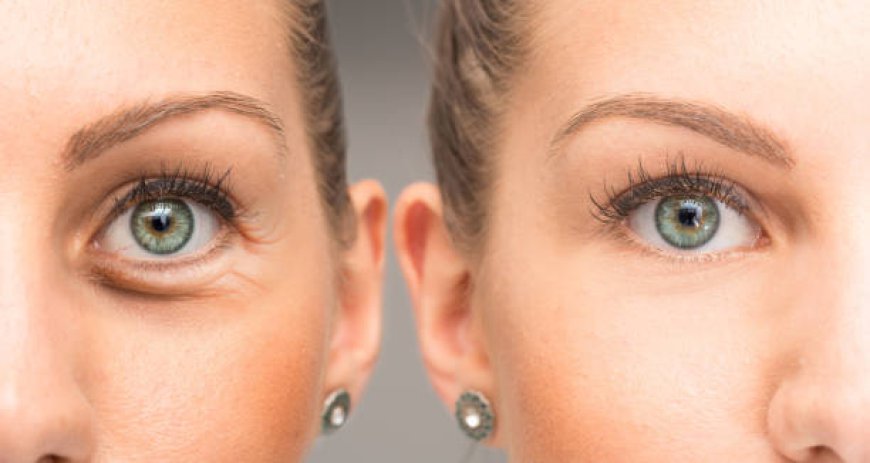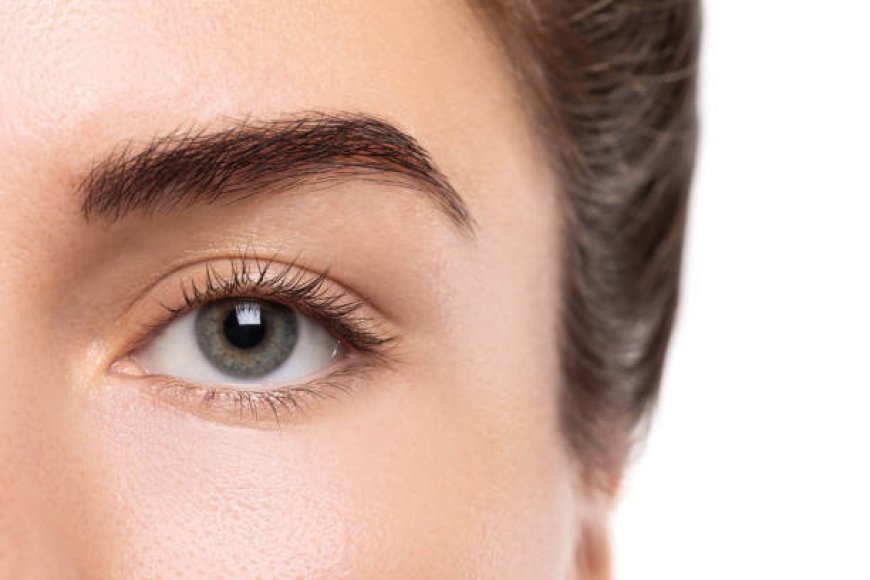Eyelid Surgery in Riyadh: Discover the Latest Techniques and Trends
Excess skin, fat, and muscle from the upper and/or lower eyelids are removed during eyelid surgery in Riyadh. The process can treat a number of problems, such as puffiness, under-eye bags, and drooping eyelids.

Eyelid surgery, also known as blepharoplasty, is becoming an increasingly popular cosmetic procedure in Riyadh. It can help individuals achieve a youthful, refreshed appearance by addressing issues like drooping eyelids, puffiness, and excess skin. As more people seek this transformative procedure, it's essential to understand the latest techniques and trends that are shaping the field of Eyelid Surgery in Riyadh(جراحة تجميل الجفن في الرياض). This blog post will explore the various aspects of eyelid surgery, including techniques, recovery, trends, and what to expect from the procedure.

Understanding Eyelid Surgery
What Is Eyelid Surgery?
Eyelid surgery involves the removal or repositioning of excess skin, fat, and muscle around the eyes. The procedure can be performed on the upper eyelids, lower eyelids, or both, depending on individual needs.
- Upper Eyelid Surgery: Aims to correct sagging skin that can impair vision and create a tired appearance.
- Lower Eyelid Surgery: Focuses on reducing puffiness, dark circles, and wrinkles.
Why People Opt for Eyelid Surgery
Individuals may choose eyelid surgery for various reasons, including:
- Aging: Skin loses elasticity over time, leading to droopy eyelids.
- Genetics: Some people inherit traits that contribute to a tired appearance.
- Health Reasons: In some cases, sagging eyelids can obstruct vision, making surgery necessary.
The Latest Techniques in Eyelid Surgery
Traditional Blepharoplasty
Traditional blepharoplasty remains a widely used technique for Eyelid Surgery in Riyadh. It involves making incisions along natural lines of the eyelids to remove excess skin and fat.
- Pros: Effective for significant sagging and puffiness.
- Cons: Recovery time can be longer, and visible scars may occur.
Minimally Invasive Techniques
Recent advancements have introduced minimally invasive techniques that offer quicker recovery and less scarring:
- Transconjunctival Blepharoplasty: This technique involves making incisions inside the eyelid, eliminating visible scarring.
- Laser Blepharoplasty: Uses laser technology to remove skin and fat, promoting faster healing.
Fat Grafting
Fat grafting is an innovative technique where fat is harvested from other areas of the body and injected into the under-eye area. This helps reduce hollowness and enhances facial volume.
- Benefits: Natural results and minimal downtime.
- Considerations: Requires skilled hands for successful fat transfer.
Trends in Eyelid Surgery
Personalized Treatment Plans
In recent years, there has been a shift towards personalized treatment plans tailored to each patient’s unique anatomy and goals.
- Assessment: Comprehensive evaluations to determine the best approach.
- Customized Techniques: Surgeons may combine various techniques for optimal results.
Combination Procedures
Many patients are opting for eyelid surgery in combination with other cosmetic procedures, such as facelifts or brow lifts, for a more comprehensive rejuvenation.
- Holistic Approach: Addresses multiple aging signs simultaneously.
- Enhanced Results: Provides a more balanced and youthful appearance.
Focus on Non-Surgical Options
Non-surgical alternatives are gaining popularity, offering temporary solutions with minimal downtime.
- Injectables: Fillers and Botox can address minor signs of aging without surgery.
- Skin Treatments: Laser therapies can improve skin texture and tone.
Preparing for Eyelid Surgery
Consultation Process
The journey begins with a thorough consultation, where the surgeon will discuss your goals, evaluate your eyelids, and create a personalized plan.
- Medical History: Review of any pre-existing conditions or medications.
- Visual Goals: Clear communication about desired outcomes.
Pre-Operative Instructions
Following the consultation, patients will receive specific pre-operative instructions to prepare for the surgery.
- Medication Adjustments: Guidance on which medications to avoid.
- Lifestyle Changes: Recommendations for diet and activities leading up to the procedure.
What to Expect During the Procedure
Anesthesia Options
Eyelid surgery is typically performed under local anesthesia with sedation or general anesthesia, depending on the complexity of the procedure and patient preference.
- Local Anesthesia: Allows for a quicker recovery, as patients remain awake but relaxed.
- General Anesthesia: Provides a deeper level of sedation for more extensive procedures.
Surgical Process
The actual procedure will vary based on the chosen technique but generally follows these steps:
- Incisions: Carefully made in natural folds or inside the eyelid.
- Tissue Removal or Repositioning: Excess skin and fat are addressed.
- Closing Incisions: Sutures are placed to minimize scarring.
Recovery and Aftercare
Immediate Post-Operative Care
After the procedure, patients can expect some swelling and bruising, which is normal.
- Cold Compresses: Can help reduce swelling and discomfort.
- Follow-Up Appointments: Essential for monitoring healing and removing sutures.
Long-Term Recovery
Full recovery from Eyelid Surgery in Riyadh typically takes a few weeks, during which patients should adhere to care instructions.
- Avoid Strain: Limiting physical activities and eye strain is crucial.
- Moisturize and Protect: Using recommended ointments and sun protection can enhance healing.
Potential Risks and Complications
Understanding Risks
While eyelid surgery is generally safe, potential risks include:
- Infection: As with any surgical procedure, infection is a possibility.
- Scarring: Though efforts are made to minimize this, some scarring may occur.
- Vision Changes: Rarely, patients may experience temporary vision disturbances.
Mitigating Risks
Patients can take several steps to reduce the likelihood of complications:
- Choose Experienced Surgeons: Selecting a qualified professional is crucial for optimal outcomes.
- Follow Post-Operative Instructions: Adhering to care guidelines significantly impacts recovery.
Why Choose Eyelid Surgery in Riyadh?
The Beauty of Riyadh
Riyadh has become a hub for cosmetic procedures, offering state-of-the-art facilities and experienced professionals.
- Advanced Technology: Many clinics are equipped with the latest surgical technology.
- Cultural Acceptance: Cosmetic surgery is increasingly accepted in Saudi society, encouraging individuals to enhance their appearance.
Patient-Centric Care
Clinics in Riyadh often prioritize patient care, ensuring comfort and satisfaction throughout the journey.
- Comprehensive Support: From consultation to recovery, patients receive thorough guidance.
- Focus on Safety: Emphasis on patient safety and well-being is a top priority.
Conclusion
Eyelid Surgery in Riyadh offers a transformative opportunity for individuals seeking to enhance their appearance and regain their youthful look. With the latest techniques, personalized treatment plans, and a growing acceptance of cosmetic procedures, patients can achieve outstanding results. Whether considering surgical options or non-surgical alternatives, understanding the nuances of eyelid surgery can empower individuals to make informed decisions.
In an era where appearance plays a significant role in self-confidence, eyelid surgery provides a path to rejuvenation and empowerment. As trends continue to evolve, Riyadh remains a leading destination for those looking to achieve their aesthetic goals through safe, effective, and innovative techniques. If you're considering Eyelid Surgery in Riyadh, take the first step toward a brighter, more confident you today.

 maria3211
maria3211